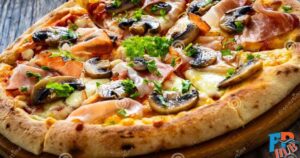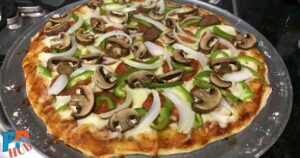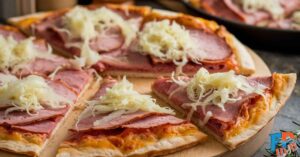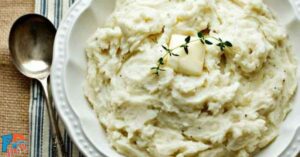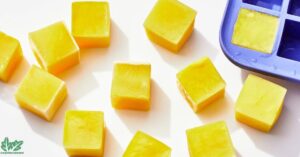Making pizza at home sounds simple, but most home cooks struggle with bland, soggy, disappointing results. Countless frustrated attempts lead to wasted ingredients, burnt crusts, and takeout.
Despite watching countless YouTube tutorials and trying endless recipes, achieving that perfect pizzeria-quality remains an elusive dream. Professional makers like Tony Gemignani have mastered techniques that transform ordinary ingredients into extraordinary culinary experiences.
This comprehensive guide, inspired by “The Pizza Bible,” breaks down professional-making secrets, providing a step-by-step roadmap to creating restaurant-quality in your own kitchen. From understanding dough science to perfecting topping techniques, you’ll learn exactly how to elevate your game.
Understanding Pizza Dough Preparation
The mysterious world of making starts with understanding its foundation: dough. Professional pizzaiolos know that creating perfect dough is more science than art. Every gram matters in this delicate culinary process.
The Science of Pizza Dough
Pizza dough isn’t just flour, water, and yeast. It’s a complex network of proteins waiting to transform. Precise measurement is the first secret weapon. Professional bakers like Tony Gemignani understand that a single gram can change everything.
Gluten development determines texture, elasticity, and ultimately, quality. The protein in flour creates intricate networks that trap air, providing structure and that coveted light, airy crust.
Weighing ingredients isn’t optional—it’s mandatory. Professional kitchens use digital scales accurate to 0.1 grams, ensuring consistent results every single time.
Mastering Dough Mixing and Kneading
Mixing dough requires surgical precision. Professional techniques differ dramatically from home cooking methods. Over-kneading destroys dough’s delicate structure, creating tough, chewy crusts.
Yeast activity depends on temperature, hydration, and gentle handling. The ideal mixing process takes exactly seven minutes—four minutes mixing, three minutes kneading. Water temperature matters critically; professional bakers use ice-cold water to control yeast activation and gluten development.
The Crucial Degassing Process
Degassing transforms ordinary dough into extraordinary p crust. This process, performed 24-48 hours after initial mixing, releases trapped carbon dioxide and reorganizes gluten networks.
Professional bakers carefully deflate dough, creating tight, uniform balls that will rise perfectly. The technique requires gentle handling—too much force destroys the delicate air pockets that create perfect texture.
Pizza Topping Fundamentals
Topping a pizza isn’t random—it’s a calculated art form requiring strategic thinking and professional knowledge.
The Correct Pizza Topping Order
Professional makers follow strict ingredient layering rules. Sauce goes first, creating a moisture barrier. Cheese follows, providing foundational flavor.
Toppings are then strategically placed to ensure even cooking and maximum flavor integration. The order matters more than most home cooks realize.
Topping Placement Techniques
Topping placement impacts every aspect of experience. Center-placed ingredients cook differently than edge-placed ones. Professional chefs understand heat distribution, moisture content, and cooking times. Strategic placement ensures crispy edges, melted cheese, and perfectly cooked toppings.
Special Topping Exceptions
Not all follow standard rules. Certain styles—like Chicago deep dish or Sicilian variations—completely reverse traditional topping sequences. Cheese might go first, creating unique textures and flavor profiles. Understanding these exceptions separates amateur cooks from professional pizzaiolos.
Sauce and Preparation
The soul of great lies in its foundation—a perfectly crafted sauce that transforms ordinary ingredients into culinary magic.
Crafting the Perfect Pizza Sauce
P sauce isn’t just crushed tomatoes. It’s a delicate balance of simplicity and flavor. Professional chefs like Tony Gemignani recommend using high-quality plum tomatoes, preferably canned San Marzano varieties from Italy.
The sauce requires minimal ingredients: fresh tomatoes, quality olive oil, and sea salt. Blending takes precisely 30 seconds—over-processing destroys the tomatoes’ natural texture.
Professional techniques involve pulsing rather than continuous blending, preserving the sauce’s vibrant color and fresh taste. The goal isn’t complexity but allowing tomatoes’ natural flavor to shine through. Salt acts as a flavor enhancer, drawing out the tomatoes’ inherent sweetness.
Read This Blog: What is Speck on Pizza?: A Guide to This Savory Italian Topping
Cooking Techniques
Transforming raw ingredients into restaurant-quality demands precision and professional knowledge.
Mastering Pizza Baking
Pizza baking is a science of temperature and technique. Professional pizzaiolos understand that 500 degrees represents the magic number for perfect crust. P stones conduct heat differently than standard baking sheets.
Ceramic and cordierite stones distribute heat most evenly, creating crispy bottoms and perfectly cooked toppings. Preheating takes minimum 45 minutes—rushing compromises results. Wood-fired ovens remain the gold standard, reaching temperatures traditional home ovens can’t achieve.
Advanced Pizza Making Tips
Elevating home pizza from ordinary to extraordinary requires insider knowledge.
Pro-Level Pizza Tricks
Professional pi making involves more than recipe following. Precision defines every step. Dough handling requires gentle touch—aggressive manipulation destroys delicate gluten networks. Temperature control matters critically.
Professional kitchens use digital thermometers measuring ingredient and environment temperatures. Resting dough allows gluten to relax, creating more elastic, lighter crusts. Humidity, flour protein content, and yeast quality dramatically impact final product.
Also Read This Blog: Turmeric Ginger Honey Recipe: A Complete Guide to Making This Healing Elixir
Ingredient Deep Dive
Understanding ingredients transforms cooking from guesswork to guaranteed success.
Selecting the Right Ingredients
Not all flour performs equally. King Arthur bread flour offers higher protein content, crucial for strong gluten development. Specialized ingredients like diastatic malt enhance crust color and flavor.
Professional sources like Penn Mac provide restaurant-quality ingredients unavailable in standard grocery stores. Protein percentage matters—higher protein creates stronger dough structure. Water quality impacts yeast activation. Professionals use filtered water to control mineral content.
Frequently Asked Question
What makes Tony Gemignani’s “The Pizza Bible” unique?
The book offers professional-making techniques, detailed 48-hour dough preparation methods, and comprehensive insights into creating restaurant-quality p at home. It provides scientific approaches to ingredient selection, dough development, and cooking techniques.
Why is precise ingredient measurement crucial in pizza making?
Precise measurement ensures consistent dough quality, controls gluten network development, and impacts yeast activity. Even a gram’s difference can dramatically change dough texture, rise, and final quality.
How long should pizza dough be prepared?
Professional makers recommend a 48-hour preparation process. This allows proper yeast development, gluten network formation, and flavor enhancement through slow fermentation.
What’s the most critical step in pizza making?
Dough preparation is the most critical step. Proper mixing, degassing, and handling determine the pizza’s texture, flavor, and overall quality.
What type of flour works best for pizza?
King Arthur bread flour is recommended due to its higher protein content, which helps create stronger gluten networks and produces better crust structure.
Conclusion
Pizza making is an art and science combined. Mastering techniques from “The Pizza Bible” transforms home cooking into a professional experience.
Understanding ingredients, respecting processes, and practicing precision elevate pizza from ordinary to extraordinary. Every piece tells a story of patience, knowledge, and passion. Your kitchen becomes a canvas, ingredients your palette, and technique your brush.



